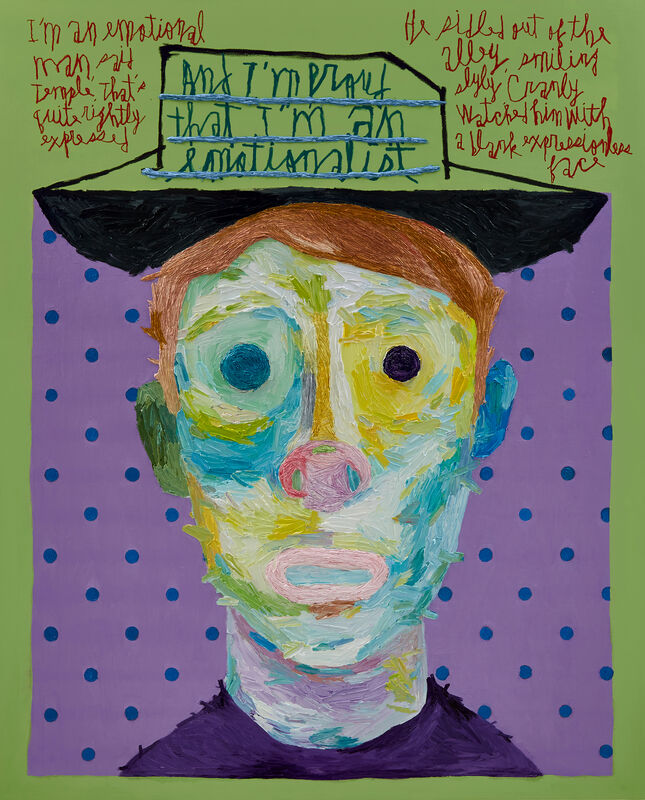Continue from Part-1
III. Artistic Rebellion: Breaking Free from Conformity
A. University Experience and Intellectual Freedom
Stephen’s transition to university marks a pivotal phase in his artistic journey. He encounters diverse ideas and individuals, fostering an atmosphere of intellectual freedom. This stage parallels the artist’s exposure to a wider creative community, allowing them to engage with a myriad of artistic styles, genres, and viewpoints that challenge and expand their creative horizons.
B. Romantic Relationships and Identity
Stephen’s romantic relationships introduce him to the complexities of human emotions and connections. These relationships prompt him to question his own identity and the roles he is expected to fulfill. The tensions between personal desires and societal roles echo the struggle artists face as they navigate their desire for individualism while being embedded in a society that often demands conformity.

C. Defiance of Societal Norms
Stephen’s growing disillusionment with traditional values prompts him to actively reject societal norms. He refuses to conform to familial expectations and nationalistic fervor, opting for a path of self-imposed exile. This rebellion reflects the artist’s refusal to be constrained by external norms, choosing instead to venture into uncharted territories of creative exploration.
IV. Struggle and Triumph: The Artist’s Quest for Self-Expression
A. Navigating Inner Conflicts
As Stephen strives to define his identity and artistic voice, he grapples with internal conflicts. These battles reflect the struggle artists face in reconciling their unique creative impulses with the societal and cultural contexts that surround them. Stephen’s inner journey mirrors the emotional and intellectual turmoil artists endure as they seek to channel their innermost thoughts into tangible works of art.

B. Self-Exploration and Creative Expression
Stephen embarks on a journey of self-exploration, employing introspection and artistic experimentation to uncover his true self. His creative expression becomes a vehicle for self-discovery, serving as a means to externalize his complex inner world. This process resonates with artists who harness their chosen medium to articulate their innermost feelings, thoughts, and aspirations.
C. Transformation into a Fully Realized Artist
Stephen’s transformation into a fully realized artist culminates as he embraces his uniqueness and refuses to compromise his artistic integrity. He reaches a point of equilibrium, where his artistic vision aligns with his evolving sense of self. This triumphant realization mirrors the artist’s ultimate goal—to transcend societal limitations and find their authentic voice, thus achieving a harmonious union between their inner world and their creative output.
This expanded exploration of the body sections illustrates how “A Portrait of the Artist as a Young Man” encapsulates the multifaceted nature of the artistic journey. Each phase of Stephen’s evolution mirrors the challenges and triumphs faced by artists throughout history, underscoring the novel’s profound relevance as a reflection of the perennial struggle for artistic self-discovery and self-expression.
In the intricate story of “A Portrait of the Artist as a Young Man,” James Joyce weaves a narrative that not only encapsulates the personal journey of Stephen Dedalus but also serves as a universal testament to the profound challenges and triumphs inherent in the artistic pursuit of self-discovery and self-expression. As we reflect upon the culmination of Stephen’s evolution, we recognize that his journey reverberates far beyond the confines of the novel’s pages, resonating with artists and individuals across cultures and generations.

The transformation of Stephen Dedalus from a constrained individual to an artist who rebels against societal norms parallels the timeless struggles faced by creators throughout history. His early experiences, marked by the shaping influence of religion and family, mirror the broader challenge of reconciling one’s inner artistic inclinations with the expectations and conventions imposed by society. This phase of Stephen’s journey becomes a poignant metaphor for the initial stages of an artist’s development, where the tug-of-war between personal vision and external pressures can either mold or stifle their creative identity.
The intellectual awakening that Stephen experiences reflects the profound impact of exposure to new ideas, literature, and aesthetics on the creative process. His rejection of religious dogmas mirrors the artist’s ongoing negotiation with established norms, challenging conventions and striving to create a unique artistic language that transcends societal boundaries. This phase of Stephen’s journey mirrors the awakening of an artist’s intellectual curiosity, often leading to a thirst for originality and a yearning for authenticity in their work.
Stephen’s defiance of societal norms and his assertion of individualism mirrors the artist’s courageous pursuit of a voice that defies conformity. This rebellious phase resonates with creators who, like Stephen, endeavor to traverse the uncharted territory of artistic expression, breaking free from preconceived notions and embracing their unique perspective. The tensions he navigates within his romantic relationships evoke the perpetual struggle to reconcile personal desires with societal roles, mirroring the delicate balance between artistic expression and the demands of the outside world.
In the climax of his journey, Stephen’s triumph in attaining authentic self-expression becomes a mirror of the artist’s ultimate goal—to achieve a harmonious marriage between their innermost thoughts and their creative output. His transformation resonates with the artist’s victory over the internal conflicts that come with artistic endeavors, achieving a state of alignment between their identity and their work.
As we close the pages of “A Portrait of the Artist as a Young Man,” we are left with an indelible imprint of Stephen Dedalus’s journey, a path carved by the universal themes of identity, rebellion, and self-expression. The novel stands as a timeless testament to the trials and triumphs of artists, encapsulating the relentless pursuit of authenticity that permeates every creative endeavor. Just as Stephen’s narrative continues to inspire readers and creators, it beckons us to embrace our unique voices, to confront societal norms, and to embark on our own quests for artistic self-discovery and self-expression

Contributor





